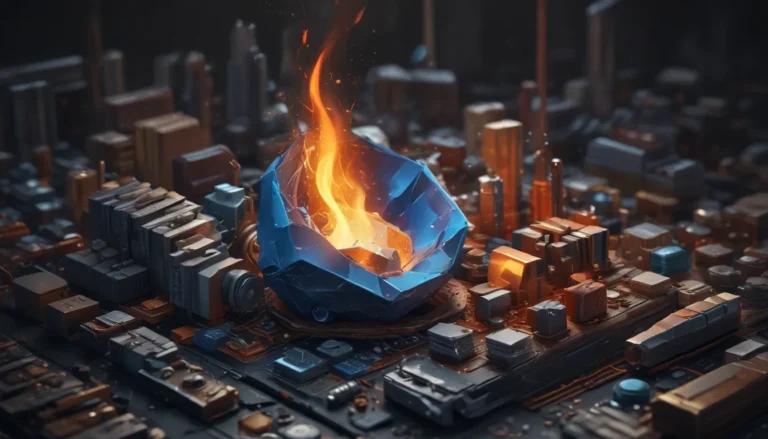A Note About Images: The images used in our articles are for illustration purposes only and may not exactly match the content. They are meant to engage readers, but the text should be relied upon for accurate information.
Are you intrigued by the captivating world of chemical bonding? Dive into the realm of ionic bonds, where atoms transfer electrons to create stable compounds with unique properties. From historical discoveries to practical applications, the magic of ionic bonds will surely captivate your curiosity. Let’s explore 20 intriguing facts about ionic bonding that will deepen your understanding of chemistry and shed light on its significance in our daily lives.
Unraveling the Mystery of Ionic Bonds
An ionic bond is a type of chemical bond that occurs when one atom transfers an electron to another atom, resulting in the formation of ions. This electrostatic attraction between positively charged ions (cation) and negatively charged ions (anion) creates strong bonds that give rise to stable compounds.
The Dance Between Metals and Non-metals
Ionic bonds often form between metals and non-metals. Metals, with low electronegativity, tend to donate electrons, while non-metals, with high electronegativity, accept electrons, leading to the formation of robust ionic bonds.
The Symphony of Crystal Lattice Structures
The formation of an ionic bond results in a crystal lattice structure, where positively and negatively charged ions arrange themselves in a repeating three-dimensional pattern. This structure imparts high melting and boiling points to ionic compounds.
Solid as a Rock: Ionic Compounds at Room Temperature
Due to their strong interactions, most ionic compounds exist in a solid state at room temperature. Common examples include sodium chloride (table salt) and calcium carbonate (chalk or limestone).
Conductors of Electricity: The Magic of Dissolution
When dissolved in water, ionic compounds dissociate into ions, allowing them to conduct electricity. This property makes aqueous solutions of ionic compounds excellent conductors of electricity.
Ionic Bonds: The Power Players in Chemical Bonding
Compared to covalent bonds, ionic bonds are generally stronger due to the potent electrostatic attraction between oppositely charged ions. This strength results in the formation of stable compounds with unique properties.
The Chemistry of Stability
Ionic bonds create stable compounds by facilitating the transfer of electrons, enabling atoms to achieve a more stable electron configuration akin to noble gases. This stability contributes to the high melting and boiling points of ionic compounds.
A Glimpse into the Crystalline World
The ordered arrangement of ions in the crystal lattice structure gives many ionic compounds a crystalline appearance. This characteristic can be observed in various minerals and gemstones.
The Biological Symphony of Ionic Bonds
Ionic bonds play a pivotal role in biological processes, such as nerve function, muscle contraction, and enzyme activity. These bonds maintain the stability and functionality of biological molecules.
The Art of Electron Transfer
In some cases, multiple electrons can be transferred between atoms to form ions with multiple charges, as seen in iron compounds with Fe2+ and Fe3+ ions.
Size Matters: The Influence of Ion Size
The size of ions impacts the strength of ionic bonds. Smaller ions have stronger attractions due to their close proximity, while larger ions exhibit weaker attractions.
Painting the Picture with Lewis Dot Structures
Lewis dot structures help visualize ionic bonding by representing atoms and their valence electrons as dots. The transfer of electrons is depicted by arrows pointing from one atom to another.
Solubility Secrets
Not all ionic compounds are equally soluble in water. Solubility depends on factors like the strength of attractions between ions and interactions with water molecules.
The Rainbow of Transition Metal Compounds
Transition metal compounds exhibit vibrant colors due to the presence of d-orbitals that absorb and reflect specific wavelengths of light, showcasing the beauty of ionic bonds.
The Power of Electrical Stability
Ionic compounds boast high electrical stability, making them resilient to electrical influences like electric fields or external charges.
Blending Covalent and Ionic Forces
Some ionic bonds exhibit partial covalent character, forming polar covalent bonds when the electronegativity difference between atoms is not large enough for a purely ionic bond.
Crafting Complexity: The Beauty of Complex Structures
By combining different ions, ionic compounds can form complex structures like zeolites or perovskites, unlocking unique properties with applications in catalysis and electronics.
The Dance of Dissociation
When dissolved in water, ionic compounds dissociate into ions that can be hydrated. Under specific conditions, compounds can also dissociate into individual ions without water molecules attached.
The Foundation of Salts and Minerals
Ionic bonding is essential for the formation of salts and minerals, crucial in geological processes and with diverse practical applications in industry and daily life.
Explore the Boundless World of Ionic Bonds
Ionic bonding is a fascinating realm in chemistry, unveiling the dance of electrons that shapes stable compounds with remarkable properties. Connect with the 20 captivating insights about ionic bonding to deepen your appreciation of this fundamental concept. Whether you’re a curious explorer or a chemistry enthusiast, the world of ionic bonds beckons with endless possibilities for exploration and discovery.
Delve Deeper with Curious Minds
Expand your chemistry journey by exploring electronegativity’s influence on chemical bonding. Uncover a trove of captivating chemistry facts that will ignite your curiosity and deepen your understanding of the wonders that surround us.
Your Feedback Shapes Our Commitment
At the core of our content lies a commitment to delivering engaging and reliable information. Each fact on our site is contributed by real users like you, ensuring a diverse range of insights. Our dedicated editors meticulously review each submission to maintain the highest standards of accuracy and authenticity. Trust in our pursuit of quality and authenticity as you embark on a journey of exploration and learning with us.






